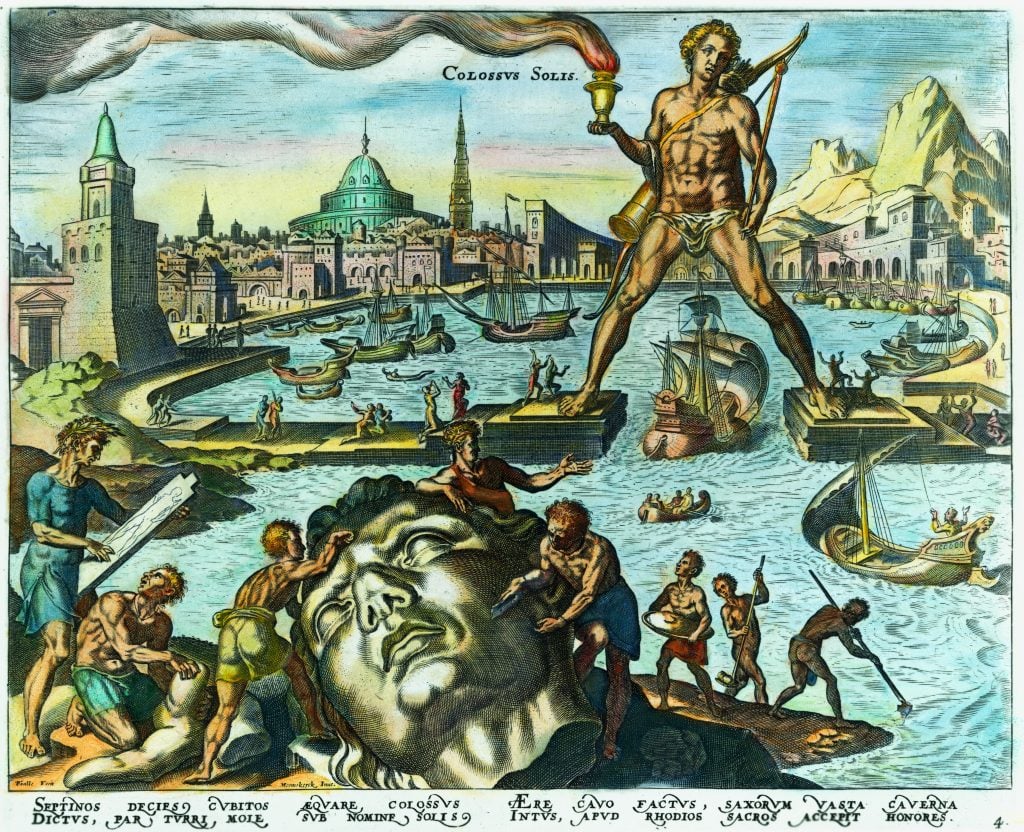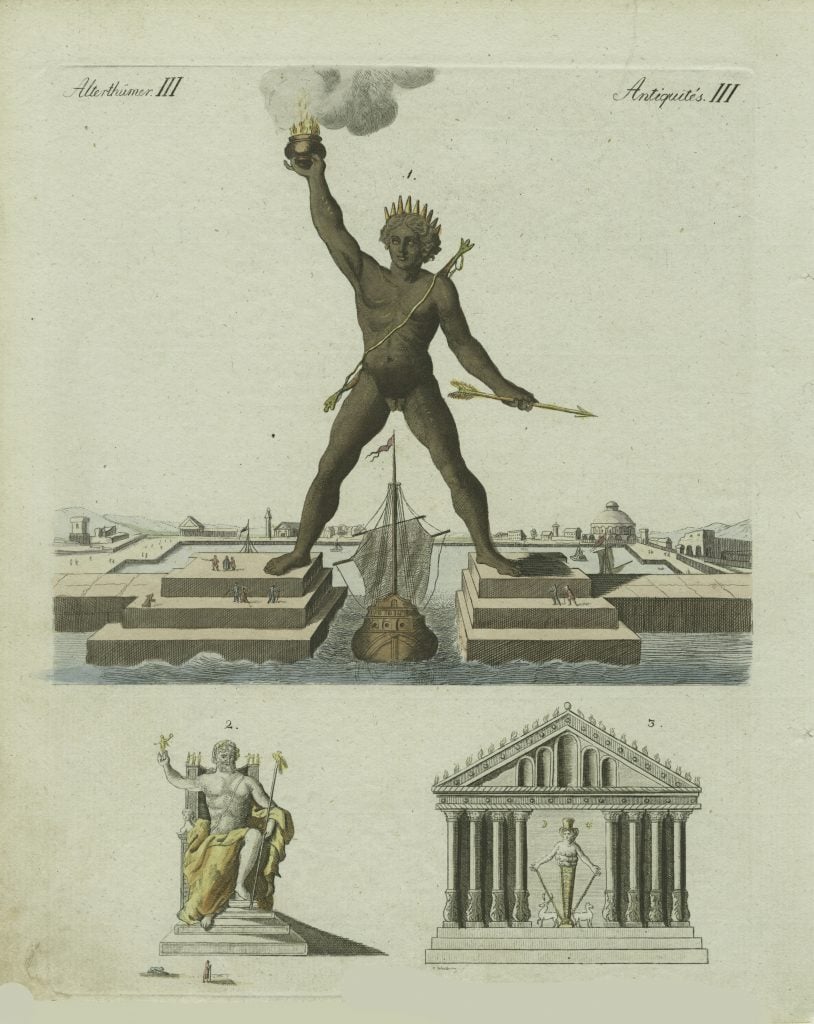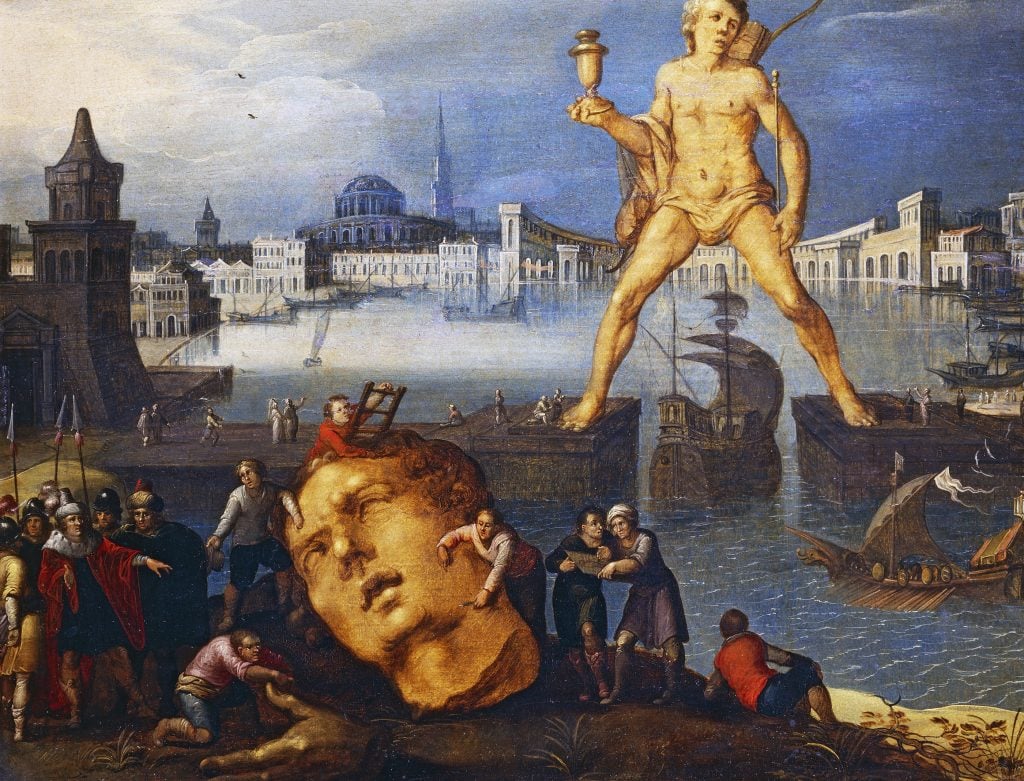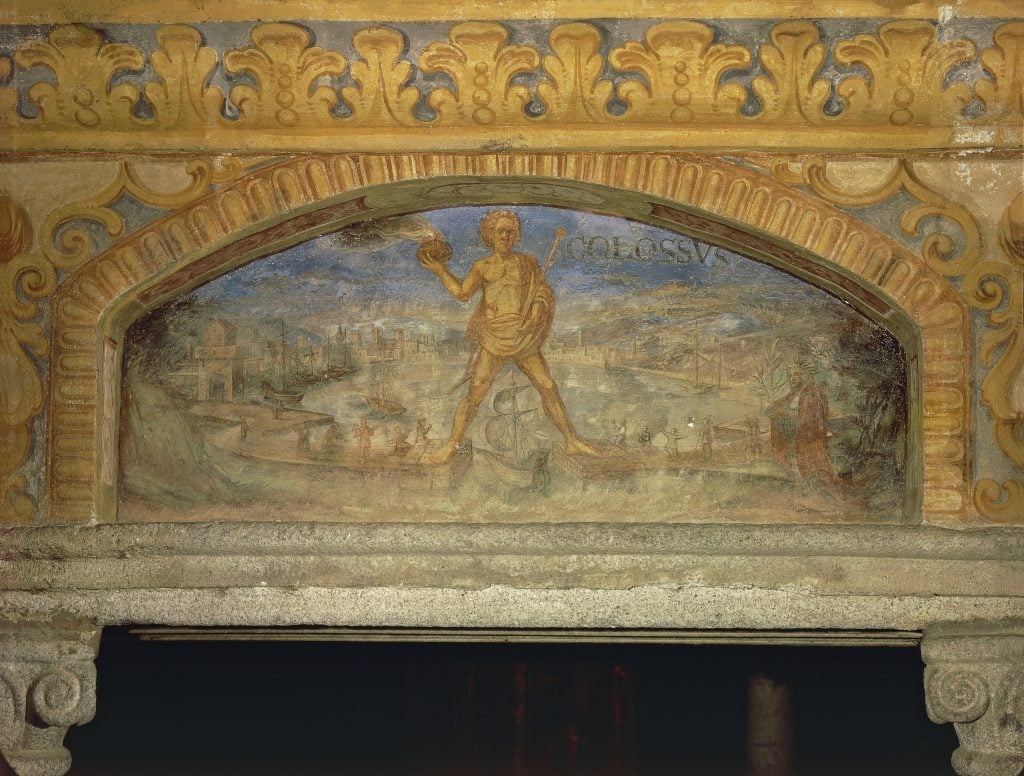Archaeology & History
Huge! A Colossal Statue of Ancient Greece That Lives on in Legend
Long destroyed, the Colossus of Rhodes was a World Wonder that survives in the cultural imagination

After the passing of Alexander the Great in 323 B.C.E., the generals that succeeded him fought one another for control of the empire he left behind. One of the most brutal episodes of this decades-spanning conflict began in 305 B.C.E, when Demetrius Poliocretes, the son of the general who ruled over Syria, Phoenicia, and Asia Minor, laid siege to the Greek island-city of Rhodes.
Fortunately for its inhabitants, Rhodes was heavily fortified, and although Demetrius strengthened his already quite formidable force with crews plucked from the waters of the Mediterranean, he proved unable to penetrate the city. Nursing heavy losses, he abandoned the siege the following year.
Although they had not defeated Demetrius in direct confrontation, the inhabitants of Rhodes took pride in surviving the conflict. So much so that, in addition to celebrations, they decided to commemorate the event by constructing a giant statue with the money they made from selling the equipment that Demitrius’s soldiers left behind in their retreat.
The statue was constructed in the image of Rhodes’s patron deity, the sun god Helios. Standing a towering 105 feet tall (according to contemporary sources), the Colossus of Rhodes was designed by the architect Chares of Lindos, a student of the famed Greek sculptor Lysippos. Built between 294 and 282 B.C.E., it quickly assumed its place among the Seven Wonders of the ancient world, joining structures like the Lighthouse of Alexandria, the Hanging Gardens of Babylon, and the Great Pyramids of Egypt.

Fischer von Erlach, Joseph Emanuel, The Colossus of Rhodes. The Olympian Jupiter. The Dianen Temple at Ephes, 1801 (1693-1742). Photo: Fine Art Images/Heritage Images via Getty Images.
“Few men can clasp the thumb in their arms,” the Roman author and philosopher Pliny the Elder said of the Colossus, “and its fingers are larger than most statues.” According to legend, the construction not only functioned as a lighthouse, guiding ships to and from Rhodes’s bay, but was also thought to come alive to defend the island if it was threatened by attacker.

Louis de Caulery, The Colossus of Rhodes (ca. 16th–17th century). Photo: DeAgostini / Getty Images.
Writing for The Collector, art historian Kieren Johns described the fate of the Colossus of Rhodes as “cyclical,” explaining that, just as the statue had been “made from the trophies of war, so too did the fallen giant eventually become the spoils of conquest.” Although there is some debate as to when the statue was destroyed, the Byzantine writer Theophanes the Confessor claimed its demolition took place as late as 653 C.E., when the Arab general Muawiyah, having captured the island, ordered its protector to be melted down and sold for scraps.

Depiction of the Colossus of Rhodes (ca. 1669) by Nikolaus Schiel in Neustift Abbey in Italy. Photo: DeAgostini / Getty Images.
Although long gone, the Colossus of Rhodes remains a well-known symbol of the ancient world. Across the centuries, its memory has been kept alive by a variety of media, from poetry to painting, including Salvador Dalí’s 1954 work The Colossus of Rhodes, which the Spanish Surrealist painter created for an uncompleted documentary film titled Seven Wonders of the World.
The Colossus of Rhodes has also left an impact on real-world monuments, notably New York’s Statue of Liberty. “The Brazen giant of Greek fame / with conquering limbs astride from land to land,” reads a poem written by Emma Lazarus to raise money for the construction of the lady’s pedestal. Titled “The New Colossus,” it’s an obvious reference to the monument’s Greek forebearer.
Sometimes, archaeology gets big. In Huge! we delve deep into the world’s largest, towering, most epic monuments. Who built them? How did they get there? Why so big?





